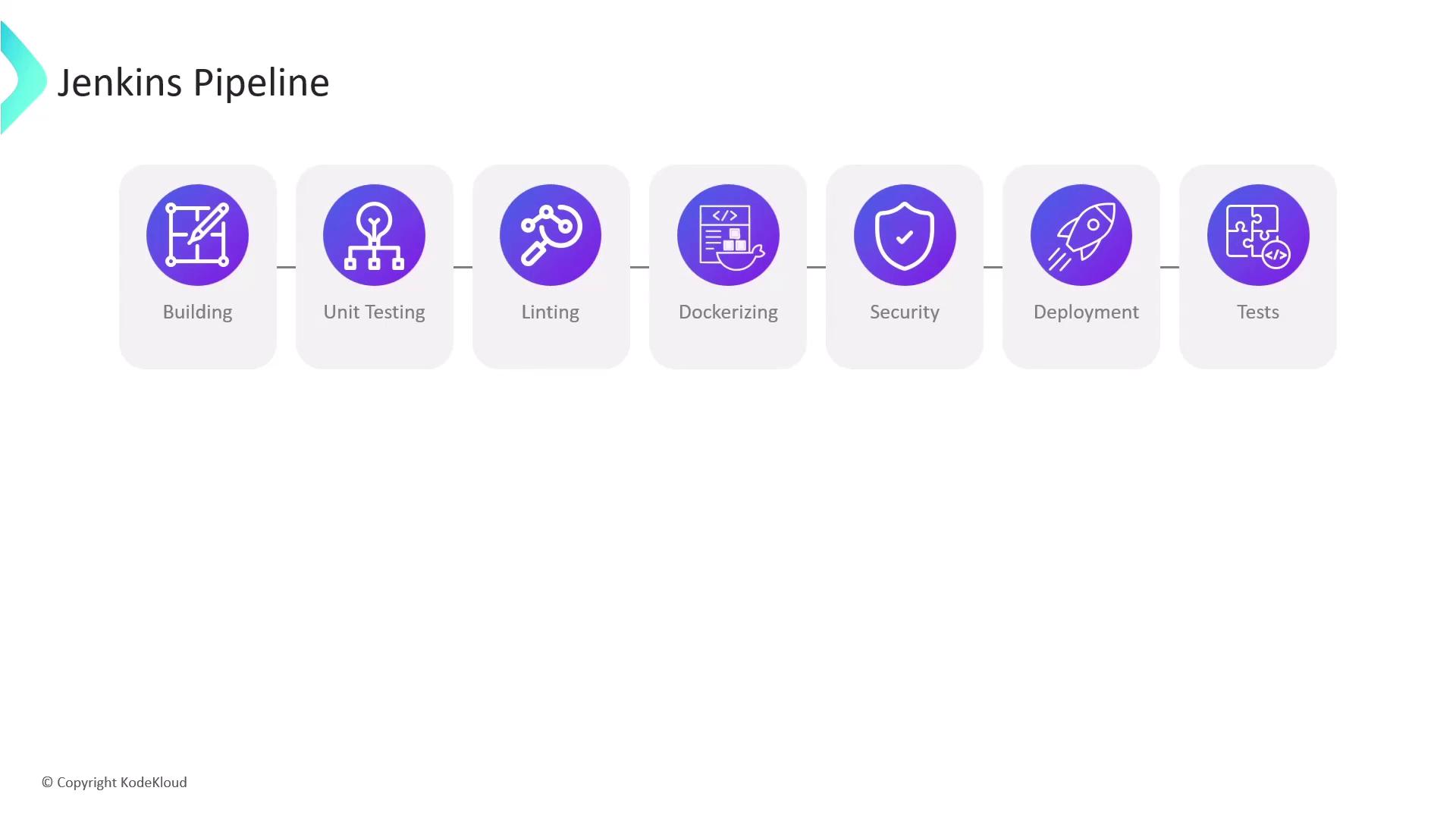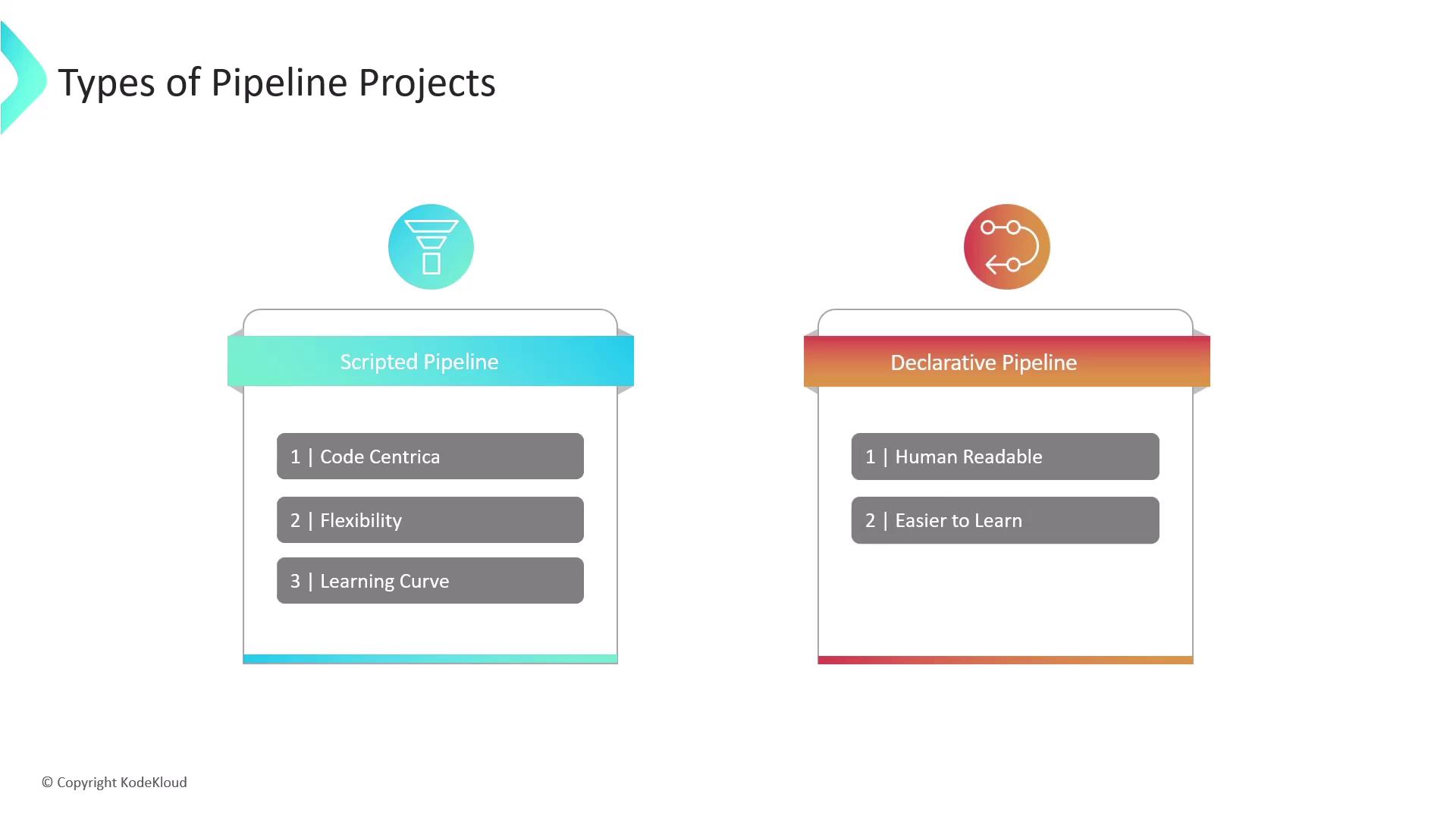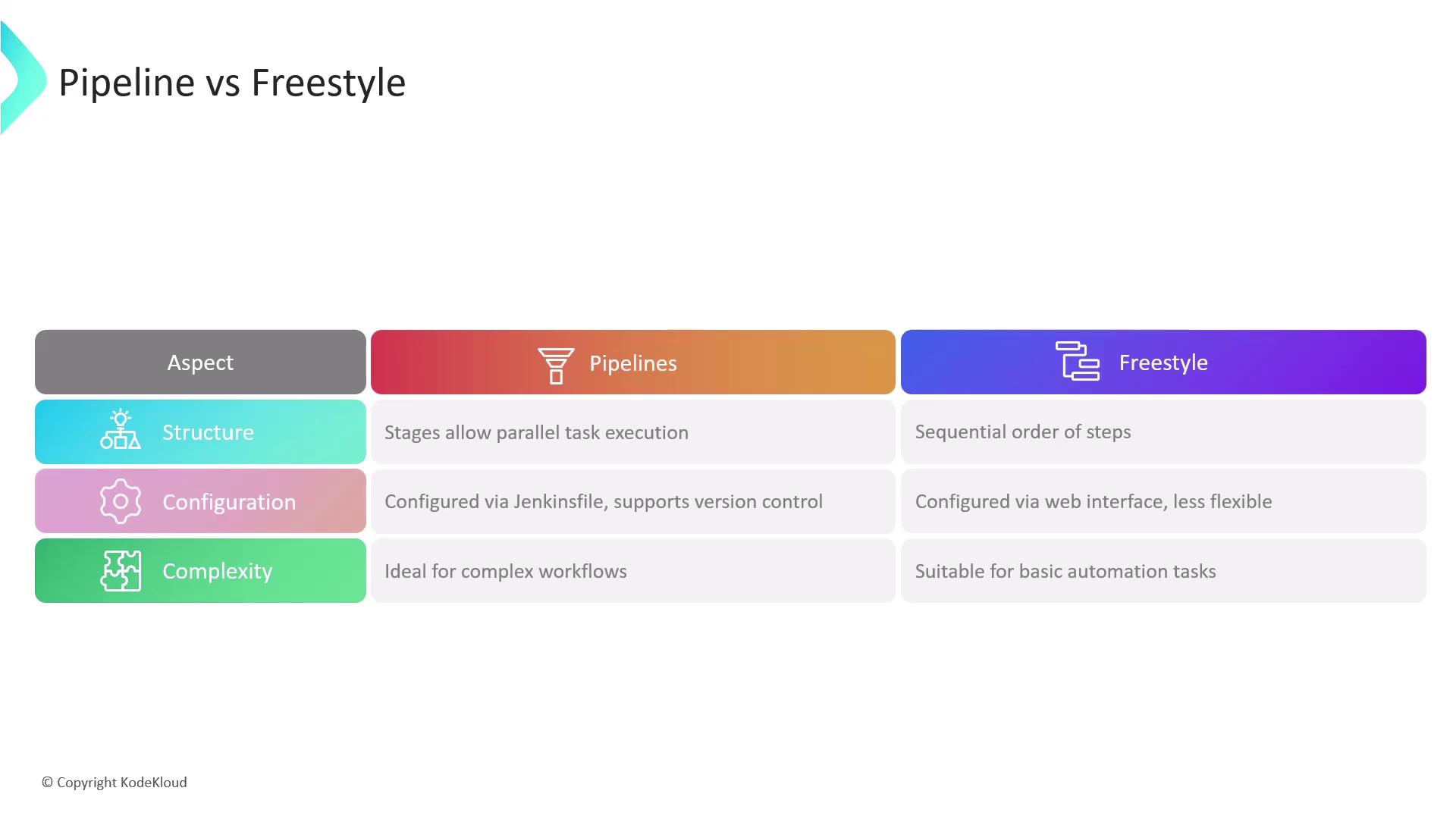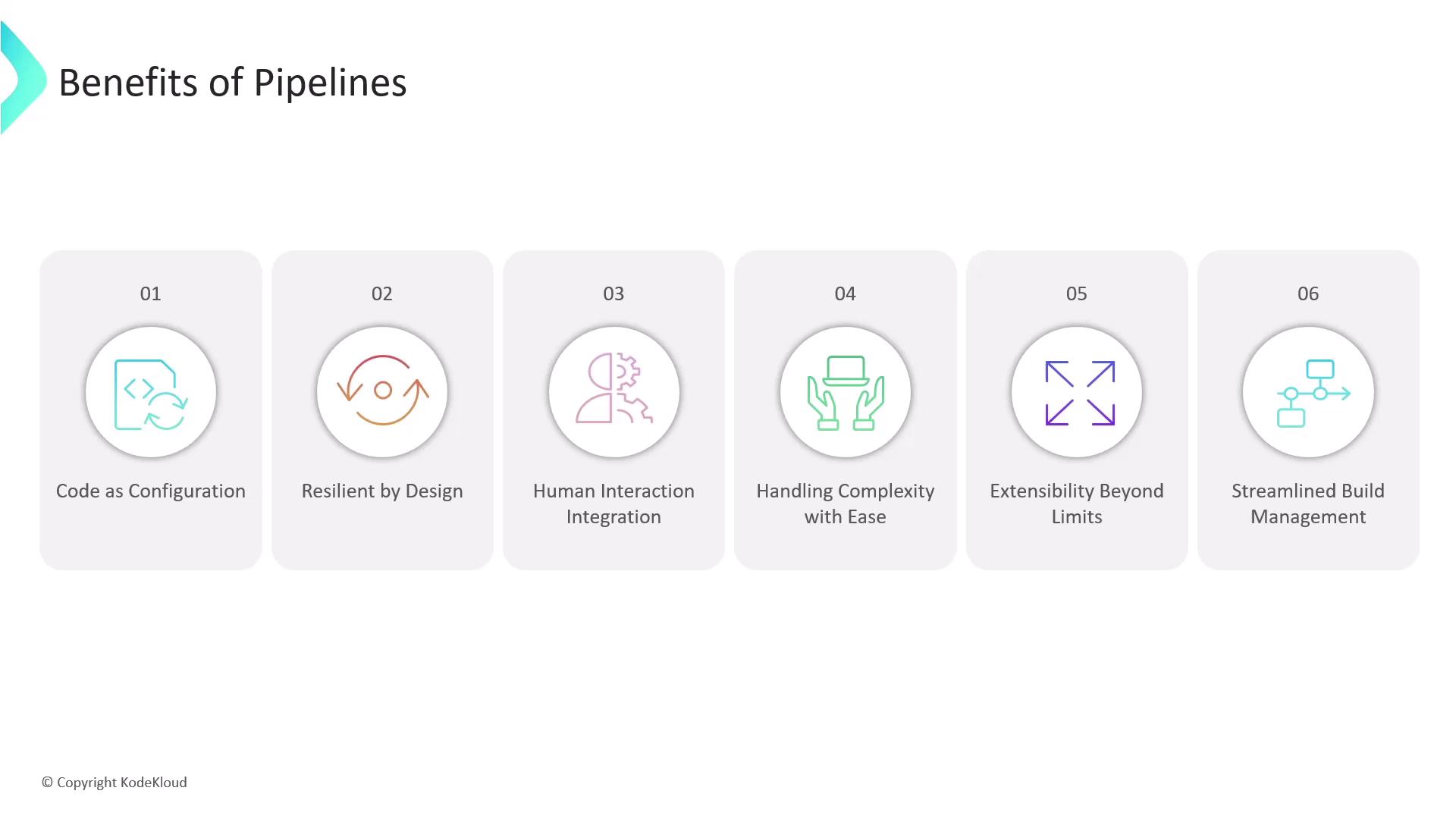Certified Jenkins Engineer
Jenkins Pipelines
Pipeline and Jenkinsfile
Jenkins Pipeline enables you to automate complex Continuous Integration (CI) and Continuous Deployment (CD) workflows using code. By defining your build, test, and deploy steps in a Jenkinsfile, you gain version-controlled, reusable, and maintainable pipelines.

Breaking down your workflow into stages—like Build, Test, Lint, Dockerize, Security Scan, Deploy, and Post-deploy Tests—helps you:
- Achieve clear separation of concerns
- Easily spot failures and bottlenecks
- Parallelize independent tasks (e.g., linting alongside unit tests)
Note
Storing your pipeline stages in code lets you audit history, perform code reviews, and roll back changes through Git.
1. Writing Your Jenkinsfile
A Jenkinsfile is a Groovy-based script that describes your pipeline. There are two syntaxes:
pipeline {
agent any
stages {
stage('Build') {
steps {
sh 'mvn clean package'
}
}
stage('Unit Test') {
steps {
sh 'mvn test'
}
}
stage('Dockerize') {
steps {
sh 'docker build -t myapp:${BUILD_NUMBER} .'
sh 'docker push myapp:${BUILD_NUMBER}'
}
}
stage('Deploy') {
steps {
sh 'kubectl apply -f deployment.yaml'
}
}
}
}
Key elements:
| Directive | Purpose |
|---|---|
pipeline | Top-level block defining the entire pipeline |
agent any | Executes stages on any available Jenkins agent |
stages | Container for all stage directives |
stage('Name') | Logical grouping of related steps |
steps | Actual shell, script, or plugin commands to run |
2. Declarative vs. Scripted Pipelines
Jenkins supports two pipeline styles. Choose Declarative for simplicity or Scripted for advanced use cases.

| Feature | Declarative Pipeline | Scripted Pipeline |
|---|---|---|
| Syntax | Opinionated, YAML-like structure | Unrestricted Groovy code |
| Readability | High—designed for easy understanding | Lower—requires Groovy/programming skills |
| Flexibility | Supports standard workflows | Full control with dynamic stages |
| Error Handling | Built-in post conditions | Custom try/catch logic |
| Learning Curve | Gentle—ideal for most teams | Steeper—suited to experienced developers |
3. Pipeline vs. Freestyle Projects
Freestyle jobs are configured via the Jenkins UI, while Pipeline projects use code. Pipelines offer far greater power, versioning, and resilience.

| Aspect | Pipeline Projects | Freestyle Projects |
|---|---|---|
| Structure | Stage-based, supports parallel execution | Sequential build steps |
| Configuration | Jenkinsfile in source control (Git, SVN) | Job DSL or manual UI configuration |
| Resilience | Resumes after controller restart | Restarts lost progress |
| Scalability | Complex workflows, shared libraries, reusable steps | Limited by UI plugins |
Warning
Avoid using Freestyle jobs for multi-stage pipelines or complex branching logic. Migrating to Declarative Pipelines reduces job sprawl and improves traceability.
4. Key Benefits of Jenkins Pipelines

- Code as Configuration
Version yourJenkinsfilealongside application code for audit trails and collaborative editing. - Resilience by Design
Pipelines automatically resume after Jenkins controller restarts, preserving workflow state. - Human Interaction
Pause for manual approvals, input parameters, or interactive prompts. - Advanced Workflow Control
Use forks, joins, loops, and parallel stages to orchestrate complex CI/CD flows. - Extensibility
Leverage plugins or Shared Libraries to add custom pipeline steps. - Unified Job Management
Combine multiple build and deploy steps into a single Pipeline job, reducing maintenance overhead.
Links and References
- Jenkins Pipeline Syntax
- Declarative Pipeline Documentation
- Scripted Pipeline Overview
- Official Jenkins GitHub Repository
- Jenkins Shared Libraries
Watch Video
Watch video content